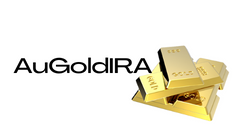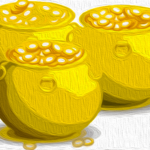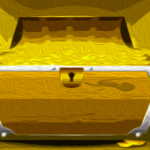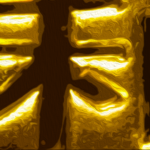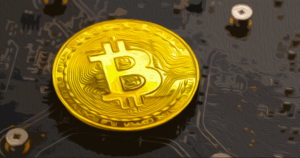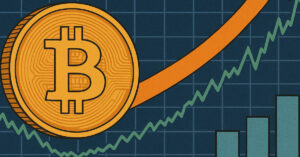The Bitcoin market has long been defined by its seemingly immutable four-year cycle, a pattern of three years of surging prices followed by a sharp correction. However, a seismic shift in policy from Washington, led by former President Donald Trump, may shatter this cycle and usher in a new era of prolonged growth for the cryptocurrency industry.
The Four-Year Cycle: A Recap
Matt Hougan, Chief Investment Officer at Bitwise Asset Management, recently posed an intriguing question: Can Trump’s Executive Order break crypto’s four-year cycle? His answer, though nuanced, leans towards an emphatic yes.
Hougan clarifies his personal belief that the four-year Bitcoin market cycle is not driven by Bitcoin's halving events. He states, "People try to link it to bitcoin’s quadrennial 'halving,' but those halvings are misaligned with the cycle, having occurred in 2016, 2020, and 2024."
Bitcoin’s four-year cycle has been historically driven by a mix of investor sentiment, technological breakthroughs, and market dynamics. Typically, a bull run emerges following a significant catalyst—be it infrastructure improvements or institutional adoption—which attracts new capital and fuels speculation. Over time, leverage accumulates, excesses emerge, and a major event—such as regulatory crackdowns or financial fraud—triggers a brutal correction.
The Executive Order: A Game Changer
The fundamental question Hougan explores is whether Trump’s recent Executive Order, which prioritizes the development of the digital asset ecosystem in the U.S., will disrupt the established cycle. The order, which outlines a clear regulatory framework and even envisions a national digital asset stockpile, represents the most bullish stance on Bitcoin from any sitting or former U.S. president.
The implications are profound:
Regulatory Clarity: By eliminating legal uncertainty, the EO paves the way for institutional capital to flow into Bitcoin at an unprecedented scale.
Wall Street Integration: With the SEC and financial regulators now pro-crypto, major banks can enter the space, offering Bitcoin custody, lending, and structured products to their clients.
Government Adoption: The concept of a national digital asset stockpile hints at a future where the U.S. Treasury could hold Bitcoin as a reserve asset, solidifying its status as digital gold.
The End of Crypto Winters?
If history were to repeat itself, Bitcoin would continue its ascent through 2025 before facing a significant pullback in 2026. However, Hougan suggests this time may be different. While he acknowledges the risk of speculative excess and leverage-driven bubbles, he argues that the sheer scale of institutional adoption will prevent the kind of prolonged bear markets seen in the past.
This is a crucial distinction. In previous cycles, Bitcoin lacked a strong base of value-oriented investors. Today, with ETFs making it easier for pensions, hedge funds, and sovereign wealth funds to allocate to Bitcoin, the asset is no longer solely dependent on retail enthusiasm. The result? Corrections may still occur, but they will likely be shallower and shorter-lived.
What Comes Next?
Bitcoin has already crossed the $100,000 mark, and projections from industry leaders, including BlackRock CEO Larry Fink, suggest it could reach $700,000 in the coming years. If Trump’s policies accelerate institutional adoption, the typical four-year pattern could be replaced by a more traditional asset-class growth trajectory—akin to how gold responded to the end of the gold standard in the 1970s.
While risks remain—including unforeseen regulatory reversals and excessive leverage—the direction of travel is clear: Bitcoin is becoming a mainstream financial asset. If the four-year cycle was driven by Bitcoin’s infancy and speculative nature, its maturation may render such cycles obsolete.
Conclusion
For over a decade, investors have used the four-year cycle as a roadmap for Bitcoin’s market movements. But Trump’s Executive Order could be the defining moment that disrupts this pattern, replacing it with a more sustained and institutionally-driven growth phase. As Wall Street, corporations, and even governments increasingly embrace Bitcoin, the question is no longer if crypto winter will come in 2026—but rather if it will come at all.
Disclaimer: This article is intended for informational purposes only and does not constitute financial advice. Readers are encouraged to conduct thorough independent research before making investment decisions.
Frequently Asked Questions
Which is better: sterling silver or 14k-gold?
Sterling silver, which contains 92% pure sterling silver instead of just 24%, is a stronger metal than gold or silver.
Sterling silver is also known as fine silver because it is made from a mixture of silver and other metals such as copper and zinc.
It is generally believed that gold is very strong. It is very difficult to separate it from its metal counterpart. If you dropped an object onto a piece or gold, it would break into thousands instead of two halves.
But silver isn’t nearly as sturdy as gold. If you dropped an item onto a sheet of silver, it would probably bend and fold without shattering.
It is commonly used in coins and jewelry. Therefore, its value tends to fluctuate based on supply and demand.
Is it possible to hold precious metals in an IRA
The answer to this question depends on whether the IRA owner wants to diversify his holdings into gold and silver or keep them for safekeeping.
Two options are available for him if diversification is something he desires. He could buy physical bars of gold and/or silver from a dealer or sell these items back to the dealer at the end of the year. However, suppose he isn't interested in selling back his precious metal investments. In this case, he should hold onto the investments as they are perfect for storing inside an IRA account.
Does a gold IRA earn interest?
It all depends on how big your investment is. If you have $100,000, then yes. You can't if you have less than $100,000
How much money you place in an IRA will determine how it earns interest.
If you invest more than $100,000 each year in retirement savings, you may want to open a regular brokerage instead.
While you may earn more interest there than elsewhere, you are also exposed to more risky investments. If the stock market crashes, you don't want all your money to be lost.
An IRA might be more advantageous if you are able to contribute only $100,000 per year. At least, until the market begins to grow again.
How much are gold IRA fees?
The average annual fee to open an individual retirement account (IRA), is $1,000. There are many types to choose from, such as Roth, SEP, SIMPLE, traditional and Roth IRAs. Each type comes with its own set rules and requirements. If your investments are not tax-deferred, you might have to pay taxes on the earnings. Also, consider how long the money will be kept. If you plan on holding onto your funds for longer, you'll likely save more money by opening a Traditional IRA rather than a Roth IRA.
A traditional IRA lets you contribute up to $5,500 each year ($6,500 if your age is 50+). A Roth IRA allows for unlimited annual contributions. The difference between the two is simple. A traditional IRA can be withdrawn after retirement without any taxes. With a Roth IRA, however, any withdrawals will be subject to taxes.
Are silver and gold IRAs a good idea for you?
If you are looking for an easy way to invest in both gold and silver at once, then this could be an excellent option for you. However, there are many other options available as well. If you have any questions regarding these types of investments, please feel free to contact us anytime. We are always happy to assist!
How do I Withdraw from an IRA of Precious Metals?
If you have an account with a precious-metal IRA company like Goldco International Inc, you might consider withdrawing your funds. When you sell your metals, the value of those funds will be higher than if it was kept in the account.
Here are the steps to help you withdraw money from your precious-metal IRA.
First, determine whether the precious metal IRA provider allows withdrawals. Some companies allow this option, while others don't.
Second, consider whether your sale of metals can allow you to take advantage tax-deferred profits. This benefit is offered by most IRA providers. But, not all IRA providers offer this benefit.
Third, check with your precious metal IRA provider to see if any fees are associated with taking these steps. You may have to pay an additional fee for the withdrawal.
Fourth, ensure that you keep track your precious metal IRA investment for at least 3 years after selling them. In other words, wait until January 1st each year to calculate capital gains on your investment portfolio. Fill out Form 8949 and follow the instructions to calculate how much gain you've realized.
You must file Form 8949 and also report any sale of precious metals to IRS. This step ensures that you pay taxes on all profits earned from your sales.
Finally, consult a trusted accountant or attorney before selling your precious metals. They can help ensure you follow all necessary procedures and avoid costly mistakes.
Can I take physical possession of gold in my IRA?
Many people want to know if gold can be physically owned in an IRA. This is a fair question because there isn't any legal way to do it.
However, if you examine the law carefully, you will see that there are no restrictions on gold ownership in an IRA.
Most people don't realize the cost savings they could make by putting their gold into an IRA rather than keeping it in their homes.
It's easy for gold coins to be thrown away, but it's much more difficult to keep them in an IRA. If you decide to keep your precious metal in your own home you will have to pay two taxes. You will pay taxes twice: once to the IRS and one for the state in which you live.
However, it is also possible to lose the gold in your home and pay twice tax. Why would you want to keep your gold in your house?
You may argue that it is necessary to have the assurance that your gold safe in your home. It is important to store your gold somewhere safer in order to prevent theft.
If you're planning on visiting frequently, it is best to keep your gold safe at home. If your gold is left unattended, thieves could easily steal it when you're away from home.
An insured vault is a better choice for gold storage. Your gold will be safe from fire, flood and earthquake as well as robbery.
One advantage of storing your gold safely in a vault is the fact that you don't have to worry too much about property tax. You will have to pay income taxes on any gains from the sale of your gold.
A IRA can be a great option if you want to avoid paying tax on your gold. An IRA will allow you to avoid income tax while earning interest on your gold.
Since you aren't required to pay capital gains tax on your gold, you'll have access to the full value of your investment whenever you want to cash it out.
And since IRAs are federally regulated, you won't have any trouble getting your gold transferred to another bank if you move.
The bottom line is: You can own gold in an IRA. Fear of losing it is the only thing that will hold you back.
Statistics
- To qualify as IRA allowable precious metals and be accepted by STRATA, the following minimum fineness requirements must be met: Gold must be 99.5% pure, silver must be 99.9% pure, and platinum and palladium must both be 99.95% pure. (stratatrust.com)
- Silver must be 99.9% pure • (forbes.com)
- Depending on your financial situation, most experts recommend you invest no more than 5% to 10% of your retirement funds in precious metals. (forbes.com)
- You can only purchase gold bars of at least 99.5% purity. (forbes.com)
External Links
investopedia.com
kitco.com
forbes.com
- Gold IRA: Add some sparkle to your retirement nest egg
- Understanding China's Evergrande Crisis – Forbes Advisor
wsj.com
How To
How to Start Buying Silver with Your IRA
How to purchase silver with your IRA – The best way of investing in silver and gold is to directly own physical bullion. Silver coins and bars are the most popular form of investment because they offer diversification, liquidity, and convenience.However, many prefer owning physical bullion over paper certificates or electronic currency.
There are several options to purchase precious metals, like gold or silver. You can purchase them directly from their producers, such as mining companies and refiners. You can also purchase them through a dealer, who buys and sellers bullion products, if you don’t want to deal directly with the producer.
This article will explain how to invest in silver with an IRA.
- Investing in Gold & Silver Through Direct Ownership – The first option for purchasing precious metals is to go straight to the source. This means that you can get the bullion straight from the source, and it will be delivered directly to your front door. While some investors choose to keep their bullion in their homes, others opt to store it at a storage facility where it's insured and protected. When you hold onto your precious metal, ensure you're storing it properly. Many storage facilities offer insurance that covers theft, fire, and damage. But, even with insurance, you can lose your investments because of natural disasters and human error. You should always store your precious metals safely in a bank safe deposit box or credit union.
- Online Precious Metals Purchase – You can buy bullion online if you want to avoid having precious metals in heavy boxes. Bullion dealers sell bullion in different forms, including coins and bars. Coins are available in a variety of sizes, shapes, designs, and colors. Coins are usually easier to carry than bars, and they tend to be less expensive. Bars come with a range of weights and sizes. Some bars weigh hundreds of pounds, while others only weigh a few ounces. A good rule of thumb when selecting which type of bar you should get is to look at what you plan to use it for. It might be a good idea to choose something smaller if it is intended to be given as a gift. It might not be the best choice if you're looking to add it in your collection or display it proudly.
- Buying Precious metal from Dealers-A third option is buying bullion through a dealer. Most dealers have a specific area of expertise, usually in silver or gold. Some dealers specialize in particular types of bullion like rounds or minted currency. Others may specialize in specific areas. Others specialize in bulk sales. You will be able to find competitive prices and simple payment options no matter who dealer you choose.
- Purchase Precious Metals via Retirement Accounts – Although this is technically not an investment, it can be used as a way to increase exposure to precious materials. You must make investments in precious metals via a qualified retirement account to be eligible for Section 219 tax benefits. These accounts include IRAs. These accounts are often set up to help you save more for retirement. They offer higher returns than most other investment vehicles. Most accounts allow you the ability to diversify between different metals. The problem? The drawback? Only employees who have been sponsored by an employer can invest in retirement accounts.
—————————————————————————————————————————————————————————————-
Based on [POSTTITLE]
by [POSTAUTHOR]
